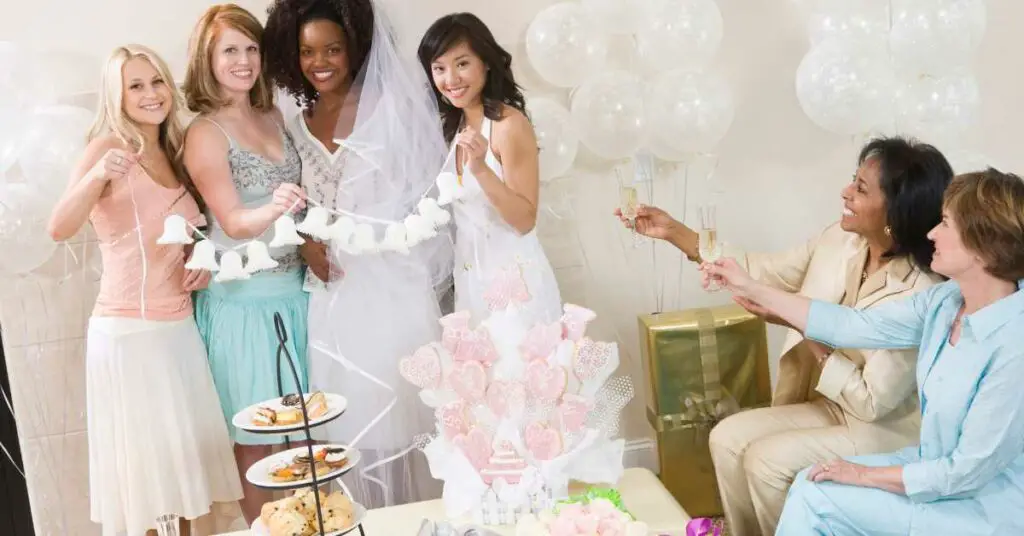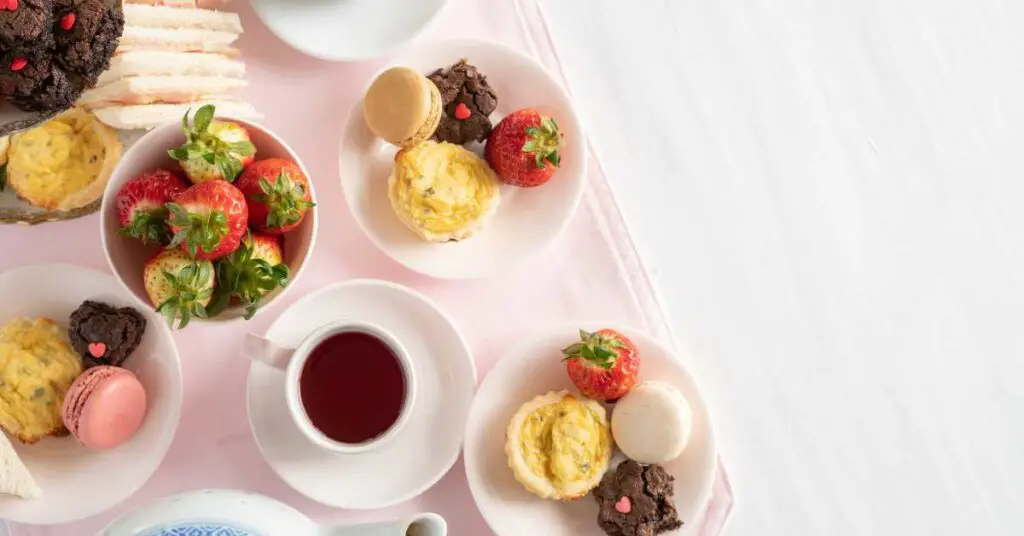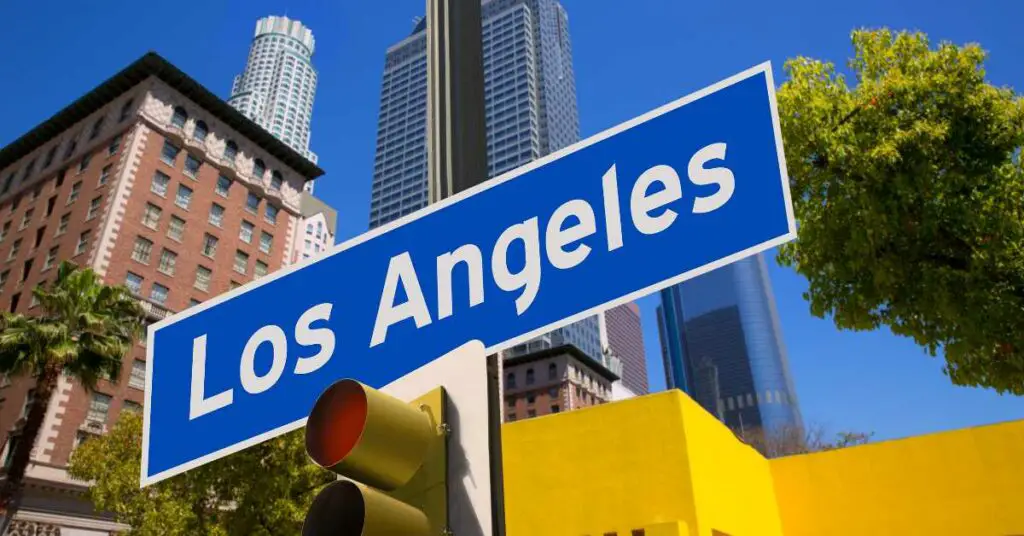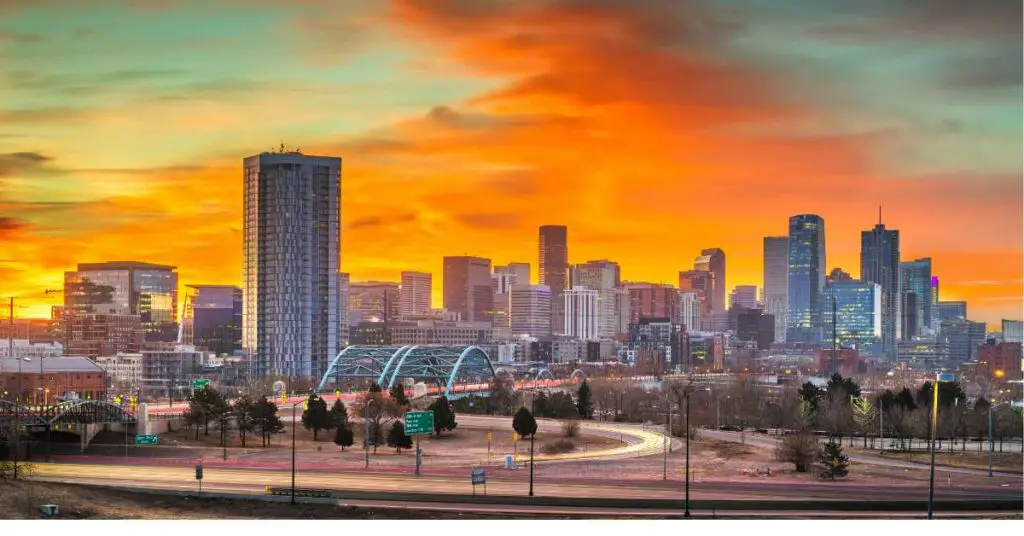Greetings, tea enthusiasts and curious sippers alike! Today, we embark on a tea-terrific journey to settle a debate that’s been brewing for centuries – the epic clash between Afternoon Tea and High Tea!
It’s time to raise our pinky fingers, put on our tea party hats, and unravel the aromatic mysteries of these beloved traditions.
Afternoon Tea is an elegant British tradition with dainty sandwiches, scones, and pastries, served in the late afternoon for socializing. High Tea, in contrast, originated among the working class, featuring heartier dishes like pies and cheeses, served later in the day, closer to dinner time.
Picture this: fine china, dainty sandwiches, scones slathered in clotted cream – that’s Afternoon Tea, darling! The elegant affair that graces grand hotels and fancy parlors, where you can almost hear the whispers of high society.
But hold on tight to your teacups because here comes High Tea, a charmingly robust and soul-soothing spread that fills hungry bellies after a long day of toil. It’s not about frills; it’s about flavor, baby!
In this blog, we’ll spill the tea on the origins, etiquette, and delightful delicacies that set these two tea-time titans apart.
So, whether you’re a tea connoisseur or just curious to find out what all the fuss is about, hop aboard the tea-party express as we explore the captivating world of Afternoon Tea and High Tea. Pinkies up, folks – we’re in for a treat!
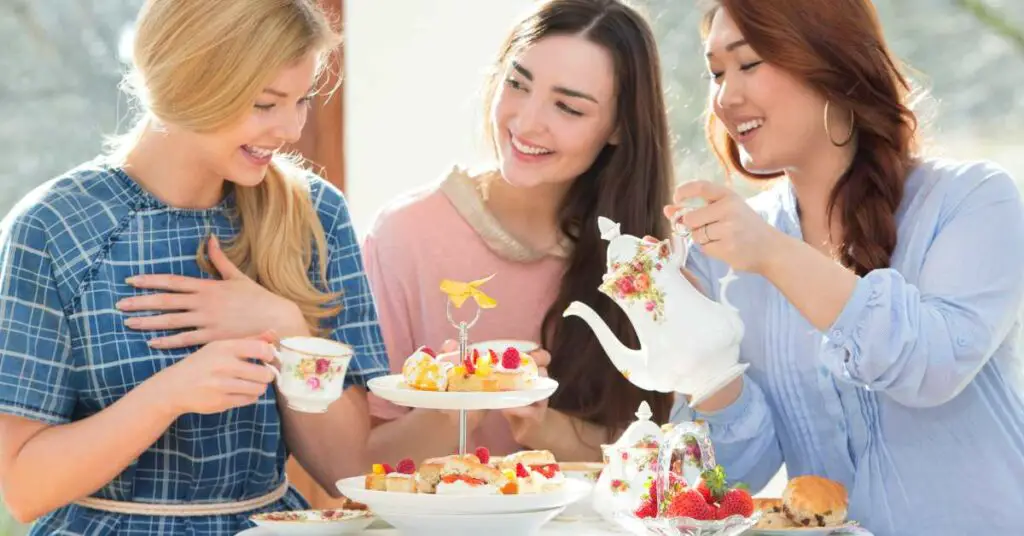
What is Afternoon Tea?
Afternoon Tea, my dear readers, is a delightful British ritual that adds a touch of sophistication to the day. Picture a mid-afternoon oasis, where the clinking of teacups and the aroma of freshly brewed blends fill the air.
It all started with Anna, the Duchess of Bedford, who in the early 1840s, felt the grumbling of her stomach between lunch and dinner. In a stroke of genius, she began inviting friends over for a sumptuous spread of finger sandwiches, dainty pastries, and, of course, a pot of the finest tea.
This charming affair soon caught on like wildfire, becoming a staple for the upper crust.
In modern times, Afternoon Tea remains a quintessential experience, often enjoyed in luxurious hotels and quaint tearooms worldwide.
It’s a chance to relish the art of conversation, indulge in sweet and savory treats, and savor the magic of tea-infused moments.
What is High Tea?
Now, let’s hop over to the other side of the teapot and discover the delightful world of High Tea, a more robust affair with a touch of hearty charm.
Contrary to what some might think, High Tea isn’t about hobnobbing with aristocrats. Nope, it originated with the working-class folks of the 19th century, who needed a hearty meal to refuel after a day of toil.
Unlike the dainty tiers of Afternoon Tea, High Tea boasts a spread that’s as satisfying as a bear hug. Picture meat pies, quiches, freshly baked bread, and cheeses, all beautifully accompanied by a steaming pot of tea.
The name “High Tea” itself comes from the fact that it’s enjoyed at a higher table, like a dinner table.
So, whether you’re craving elegance or a belly-filling banquet, the world of tea has you covered with Afternoon Tea and High Tea, each offering its own delightful spin on this timeless tradition.

Unveiling the Enchanting Contrasts: Afternoon Tea vs. High Tea
Ah, my tea-loving companions, behold the enchanting world of Afternoon Tea and High Tea – two charming siblings, each with its unique allure. Let’s peek behind the teacup curtain and explore the main differences that set them apart!
Origins and Social Class:
Afternoon Tea, born in the lap of luxury, was a pastime of the English elite, flaunting its grace in fancy salons. On the other hand, High Tea emerged from the heart of the working class, offering a substantial spread to refuel after a hard day’s work.
One graced the drawing room, the other nestled on farmhouse tables.
Time of Day
The clock chimes set the tone – Afternoon Tea, as the name suggests, finds its spot in the late afternoon, around 3-4 pm, while High Tea serves up its heartiness later in the day, closer to 5-6 pm, almost dinner-like.
Savory vs. Sweet:
Here’s where the culinary magic happens! Afternoon Tea delights the palate with delicate sandwiches, scones, and exquisite pastries, leaning towards sweet indulgence.
High Tea, though, triumphs in the realm of savory sensations, boasting pies, quiches, and hearty dishes that warm the soul.
Setting and Formality:
Afternoon Tea struts in with all its sophistication, draped in fine linens and accompanied by soft piano music. It’s a refined affair where pinkies might just find themselves elevated.
In contrast, High Tea, with its hearty spread and no-nonsense vibe, finds comfort in a cozier, casual setting.
So, dear tea enthusiasts, as you dive into the world of tea traditions, remember that both Afternoon Tea and High Tea offer a glimpse into the past, each with its unique character and flavorsome tales to tell.
Whether you’re craving elegance or a belly-warming feast, there’s tea time to match your mood!
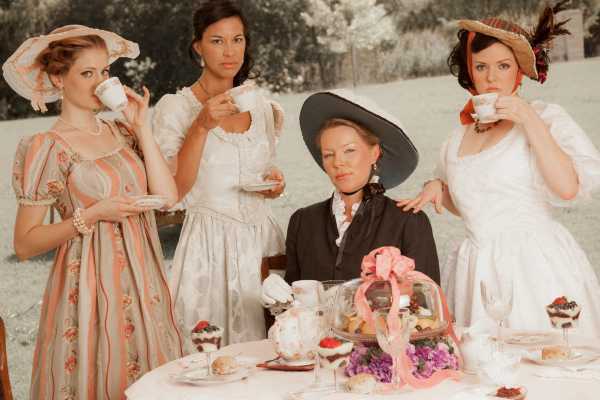
Types of Afternoon Tea: A Delectable Variety
Beyond the elegance and finesse of Afternoon Tea lies a tantalizing array of delightful variations. Each type serves up a unique twist on this time-honored tradition, creating a tapestry of flavors to suit every tea enthusiast’s fancy.
Let’s steep ourselves in the fascinating world of Afternoon Tea variations:
- Traditional Afternoon Tea
The quintessential classic, Traditional Afternoon Tea unveils the timeless trio of finger sandwiches, freshly baked scones with clotted cream and jam, and a heavenly assortment of pastries and cakes. It’s the epitome of refined indulgence that captures the essence of Anna, the Duchess of Bedford’s original soirée.
- Cream Tea
Calling all scone lovers! Cream Tea, a simpler yet no less scrumptious affair, focuses solely on the perfect pairing of warm, buttery scones accompanied by clotted cream and jam. It’s a delightful treat, perfect for those seeking a lighter tea experience.
- Royal Tea
Fit for kings and queens, Royal Tea elevates indulgence to regal heights. This extravagant version of Afternoon Tea includes exquisite delicacies and rare teas, drawing inspiration from the royal palaces themselves. Prepare to dine like royalty!
- Champagne Afternoon Tea
For those who enjoy a bubbly twist, Champagne Afternoon Tea adds a touch of effervescence to the experience. Sip on fine teas while savoring delectable treats, all accompanied by the delightful sparkle of champagne.
- Themed Afternoon Teas
Enter the realm of creativity with Themed Afternoon Teas. From Alice in Wonderland-inspired wonderlands to seasonal delights like Christmas Tea, these themed experiences transport guests to magical worlds while delighting their taste buds.
- Children’s Afternoon Tea:
Young tea enthusiasts need not feel left out! Children’s Afternoon Tea offers adorable treats, mini sandwiches, and fun-shaped cakes designed to ignite young imaginations while introducing them to the world of tea.
Each Afternoon Tea variation presents a new chapter in the timeless story of this cherished tradition. So, whether you’re yearning for a regal experience or seeking whimsical wonder, there’s an Afternoon Tea type to suit every tea lover’s appetite. Let the tea parties continue, and may the scones be ever in your favor!
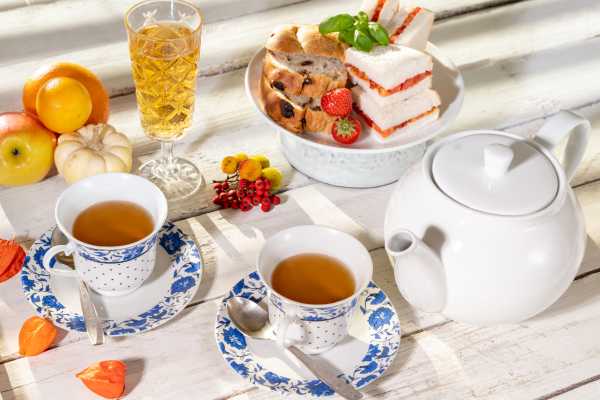
Frequently Asked Questions
Which is fancier high tea or afternoon tea?
Afternoon Tea is typically considered fancier with its refined setting, delicate treats, and elegant atmosphere. High Tea, on the other hand, exudes a hearty charm, making it a more robust, rustic affair.
Is high tea for the rich?
High Tea’s origins were among the working class in the 19th century, offering a substantial meal after work. While it may now be enjoyed by a broader audience, it was not initially intended exclusively for the wealthy.
Is Sri Lanka the best tea?
Sri Lanka, known for its iconic Ceylon tea, is renowned for producing some of the finest teas globally. With its lush tea estates, favorable climate, and skilled craftsmanship, Sri Lanka’s tea has earned a well-deserved reputation for its exceptional flavor and quality.

